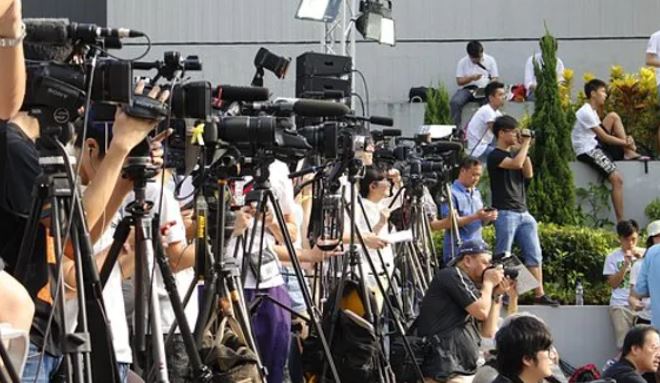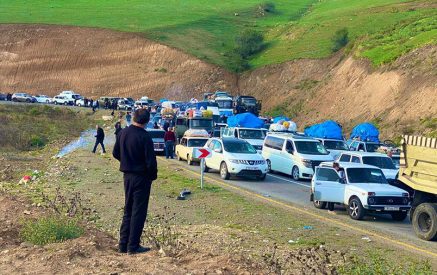Statement on the Western Media Narrative Regarding Azerbaijan’s September 13 Attack on Armenia
The Lemkin Institute for Genocide Prevention
The Lemkin Institute for Genocide Prevention is deeply disturbed by the harmful and often ill-informed media rhetoric used in the coverage of the unilateral unprovoked attack launched against the Republic of Armenia’s sovereign territory by the state of Azerbaijan. Since the beginning of Azerbaijan’s shelling of several eastern Armenian towns on September 13 – in violation of fundamental principles of international and humanitarian law – Western media outlets reporting on the attacks have used terms that downplay, ignore, or make light of Azerbaijani war crimes and the crime of aggression.
Western media outlets regularly utilize the same rhetorical devices that were mobilized in the reporting of Serb attacks on Bosniaks and the Hutu Power attacks on Tutsis in the 1990s – rhetoric which reframed genocidal assaults and plans as ancient hatreds and tribalism.
Read also
Given that Azerbaijan’s actions are militarily, strategically, and diplomatically supported by Turkey, a key NATO member, the Western press should show particular interest in ensuring that this conflict is accurately represented.
Much of the present media coverage fails to address the history of the conflict, specifically the complexities of the conflict in the contested territory of Nagorno-Karabakh. Nagorno-Karabakh (“Artsakh” to Armenians) is an ethnic Armenian enclave annexed by force, along with the territory of Nakhichevan, to Azerbaijan at the beginning of the 1920s under Soviet rule. It was formally annexed by Azerbaijan in the 1970s. Although Nagorno-Karabakh, like most of the South Caucasus region, was inhabited by an ethnically mixed population in the 1980s, Armenians have constituted the vast majority of its population for centuries and are considered indigenous to the region. In 1991, after the collapse of the Soviet Union, Nagorno-Karabakh authorities held a referendum in which 99% of Artsakh’s population voted for independence from Azerbaijan. Although Nagorno-Karabakh is still currently internationally recognized as part of Azerbaijan, its majority Armenian population has claimed independence since 1920 and has been steadily advocating for the recognition of its right to self-determination under international law.
In the 1980s, when post-Soviet borders were being contested across the former empire, Azerbaijan violently repressed Artsakhsis who were peacefully advocating for independence. Azerbaijan further launched murderous pogroms against all Amenians living in Azerbaijani cities and towns as part of this repression, which began a process of flight that ended the long historical presence of Armenians in all territory controlled by Azerbaijan outside of Nagorno-Karabakh. In the face of abject brutality, which included a pattern of genocidal atrocities, ethnic Armenians in Nagorno-Karabakh were convinced that there would be no respect for Armenian life in post-Soviet Azerbaijan. This started a war over Nagorno-Karabakh that has been ongoing – on and off – since the early 1990s. The first Nagorno-Karabakh war ended with an Armenian victory In 1994, after which Artsakh formally established a republican system of government with division of power in the 1990s. During the war in 2020, during which Azerbaijan committed horrific atrocity crimes against Armenian civilians and POWs, Azerbaijan regained much of the territory lost in 1994.
The well-funded Azerbaijani state propaganda campaign, brought to international attention in 2018 with investigative reports of President Ilham Aliev’s “caviar diplomacy” that was a part of the $2.5b “Azerbaijani Laundromat” scheme, continues to present a narrative of Azerbaijani victimization at the hands of racialized Armenian enemies. Much of this narrative is patently false and based on fictitious historical claims. Other aspects of the narrative, such as those around the so-called “Khojaly Genocide” and the “Gugark Massacre,” misleadingly frame and present events in ways meant to conceal Azerbaijan’s intentional stoking of ethnic grievances in the 1980s, its official incitement to violence against Armenians, and its genocidal rhetoric and aims in the region. While Azeris have legitimate grievances, and while this territorial conflict has caused tragic outcomes for Azeris as well as Armenians, there has never been genocidal intent on the part of Armenian statesmen nor has the Armenian state supported any crimes committed by individual Armenians (such as during the Gugark riot or the Khojali war crimes).
The ongoing conflict over Nagorno-Karabakh not only has caused the loss of life, but also has resulted in the systematic displacement of the indigenous Armenian population and the destruction of Armenian cultural heritage by Azeri forces in many areas of Artsakh under Azeri control as well as in other regions, such as Nakhichevan, the western Azerbaijan enclave nestled between Armenia and Turkey, where evidence of the historical Armenian presence (represented by ancient khachkars) has been completely eradicated. This massive cultural violence has been compared to vandalism against historical heritage committed by the Taliban in Afghanistan and ISIS in Syria. Not only do Azerbaijani state officials refuse to recognize the long historical presence of Armenians in Nagorno-Karabakh while sanctioning the destruction of all traces of this presence, but also they refuse to use the internationally-recognized geographic term “Nagorno-Karabakh,” referring instead to the area only as “Karabakh,” which claims it as an integral part of the eastern Azeri territory of Karabakh. This geographic designation has found itself into Western press reporting, with the consequence of supporting and advancing Azeri expansionist claims.
The reporting on the violence against Armenia stands in stark contrast with the reporting on Russia’s invasion of Ukraine in February 2022. At the outbreak of that war, the Western media was clear about which country was the aggressor. They offered in-depth analyses of Russian President Vladimir Putin’s speeches and other evidence of his attitude towards Ukraine and Ukrainians. While the South Caucasus is smaller and more distant from Europe than Ukraine, this is no excuse for ignoring Azerbaijani President Ilham Aliev’s hateful rhetoric, reproducing Azerbaijani propaganda, sowing confusion about causation, and failing to adequately report on the facts on the ground.
The Lemkin Institute has identified a number of trends regarding the misleading, and therefore harmful, language used by media outlets regarding the conflict. The term “clash(es)” has been consistently used by the media since the 2020 war over Nagorno-Karabakh. The term itself cannot offer precise clarity about the details of the conflict, and it is often used as a breaking news “buzzword.” Its frequent use suggests that the conflict is playing itself out around incomprehensible issues that resist factual confirmation. For example, an Al Jazeera article from September 15, titled “Death toll in Azerbaijan-Armenia border clashes rises,” has the following subtitle: “United Nations welcomes ceasefire after 176 soldiers killed in two days of fighting, which each side blames on the other.” While it is true that each side blames the other, only one side invaded a sovereign state without provocation. On September 14, CNN ran the story “Ceasefire is short-lived as Azerbaijan and Armenia resume attacks,” which suggests that the decision to engage militarily was mutual, ignoring the spontaneity of Azerbaijan’s attack on the Republic of Armenia.
Other short-cut descriptors like “tensions” and “flare up” suggest equal responsibility for the violence and downplay the severity of an unprovoked attack by a strong adversary with an even stronger regional ally. (See: Times of Israel, 9/14/2022, “Death toll reaches 99 in fresh Armenia-Azerbaijan flareup”.) These words, along with balanced-sounding language like “armed conflict” and “hostilities,” incorrectly frames the actions of the aggressor and are used to imply equal power and assume equal responsibility for the attack. Similarly, several high-ranking diplomats called for “both sides [to] show restraint,” a term which is unfortunately most often invoked after a targeted nation or people responds in self-defense. In the case of the attack on September 13, US Secretary of State Antony Blinken issued a statement with this exact call, speaking up only after Armenia’s act of self-defense. As has been seen in so many other instances of genocide, the fallacy of bothsidesism serves only to support the aggressor party and mask its crimes.
Other reporting describes Azerbaijan’s war of aggression against the Republic of Armenia’s sovereign borders as “linked to” the conflict over the disputed Nagorno-Karabakh territory, which frames Azerbaijani aggression according to the justifications of the Azeri government. Azerbaijani aggression towards the Republic of Armenia should be analyzed in terms of its own government’s internal rhetoric, which frequently claims that all of present-day Armenia is Azeri land. On this note, there is a concerning number of articles quoting official statements made by the Turkish and Azeri governments that are not fully vetted for potential propaganda and are instead accepted at face value. It is not made clear to readers that Azeri assaults on the Republics of Artsakh and on Armenia are the consequence of an ideology of expansionism shared with and stoked by Turkey, an ideology that the presidents of both countries frequently speak about in public.
Several articles also use childish words that are wholly inappropriate for an investigation into a serious decades-long war characterized by genocidal atrocities committed Azerbaijan and blame Armenia for invoking its own invasion (see, for example, “Armenia sides with Russia in snub to Azerbaijan over border fracas by Newsweek, 9/13/2022). A September 13 article published in Politico (“No good outcomes in latest Armenia-Azerbaijan fighting”) referred to the “decadeslong spat over Nagorno-Karabakh” (our emphasis).
Finally, the Lemkin Institute is concerned by the number of Western media articles which do little to provide background information on Azerbaijan’s one-sided decision to violate the ceasefire agreement that has been in place since the end of the 44-day war in November of 2020. Even ostensibly well-meaning explanation articles ignore the high level of Armenophobic hate speech by Azeri officials, the documented atrocities committed by Azeri soldiers in the 2020 war against Armenian prisoners of war and civilians, the string of connected hate crimes against Armenians in the diaspora, the history of the 1915-1923 genocide against Armenians, Greeks, and Assyrians committed by the Ottoman Empire (which took the lives of at least 1.2 million Armenians), the well-funded and longtime denial of that genocide by Turkey and Azerbaijan, the internal human rights abuses committed by the government of Azerbaijan (which often uses hate speech against Armenians and war with Armenia as a distraction), and the series of broken ceasefire attacks such as this one that have been consistently committed by Azerbaijan with the military and diplomatic support of Turkey.
The Lemkin Institute calls upon Western media outlets to clarify their language and avoid the false neutrality of “balanced reporting” that simply reproduces the propaganda of the aggressor and fuels genocidal actions and rhetoric. The Western media needs to tell the truth and call the war on Armenia what it is: an aggressive war with clearly demonstrated genocidal intent against Armenians. The governments of Turkey and Azerbaijan have been open about their animosity towards the nation, people, and culture of Armenia. If left unchecked, the world will be faced with addressing yet another devastating genocide and the press will have been complicit once again.























































